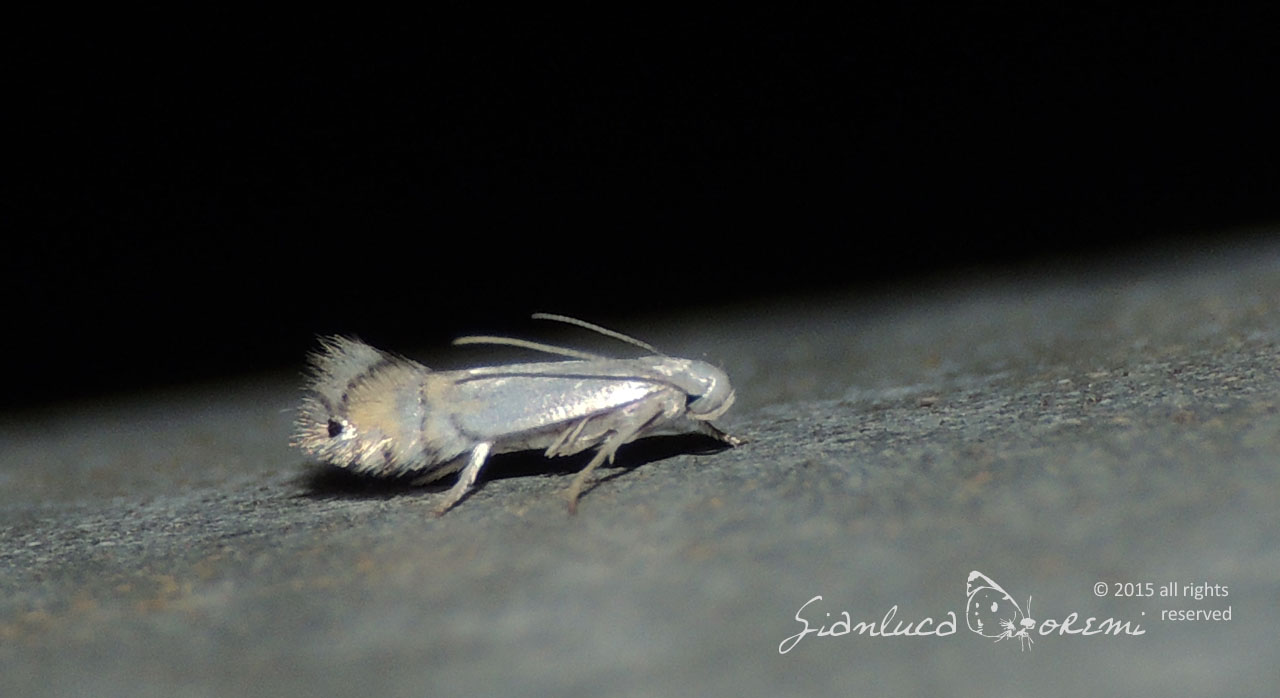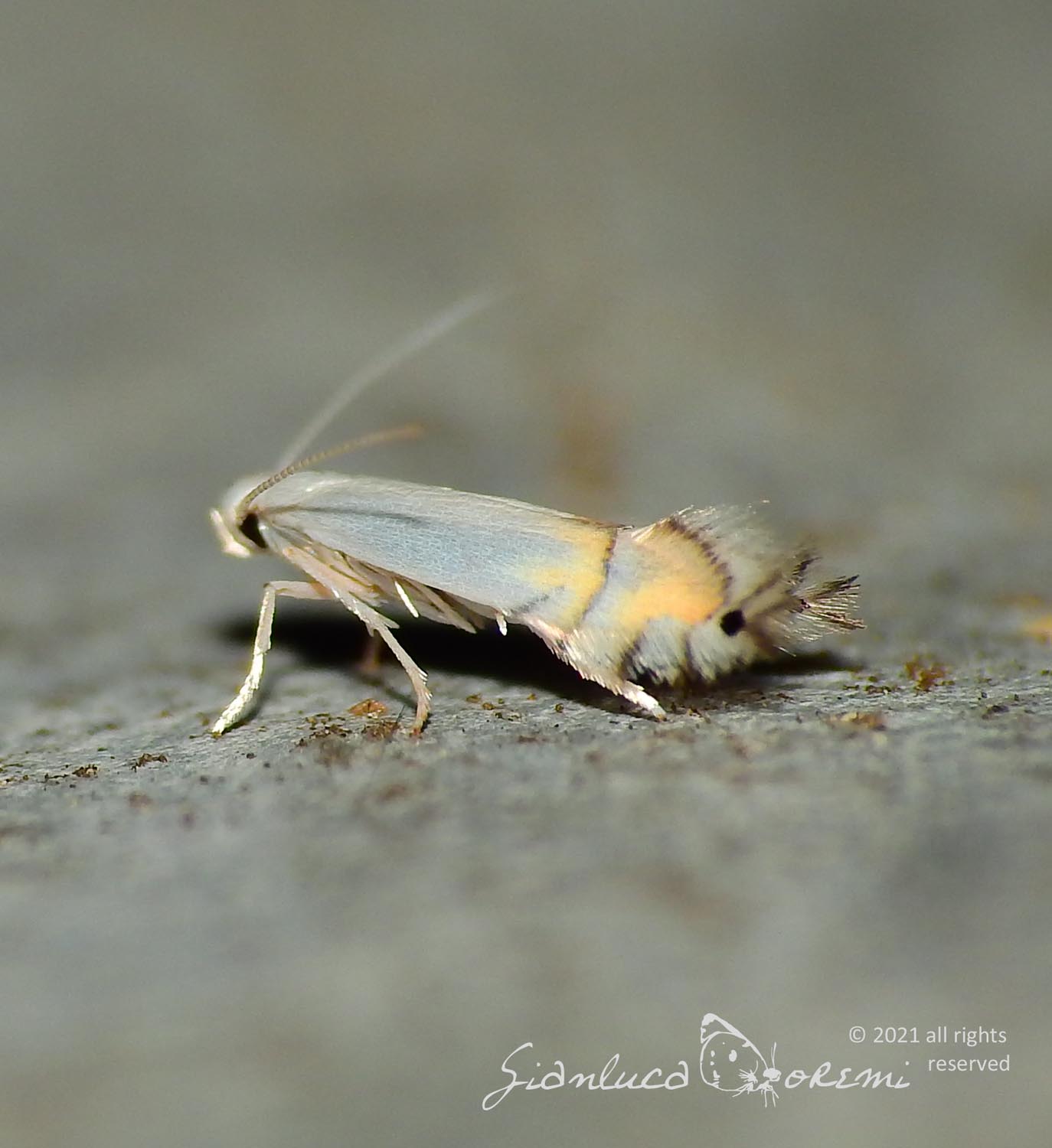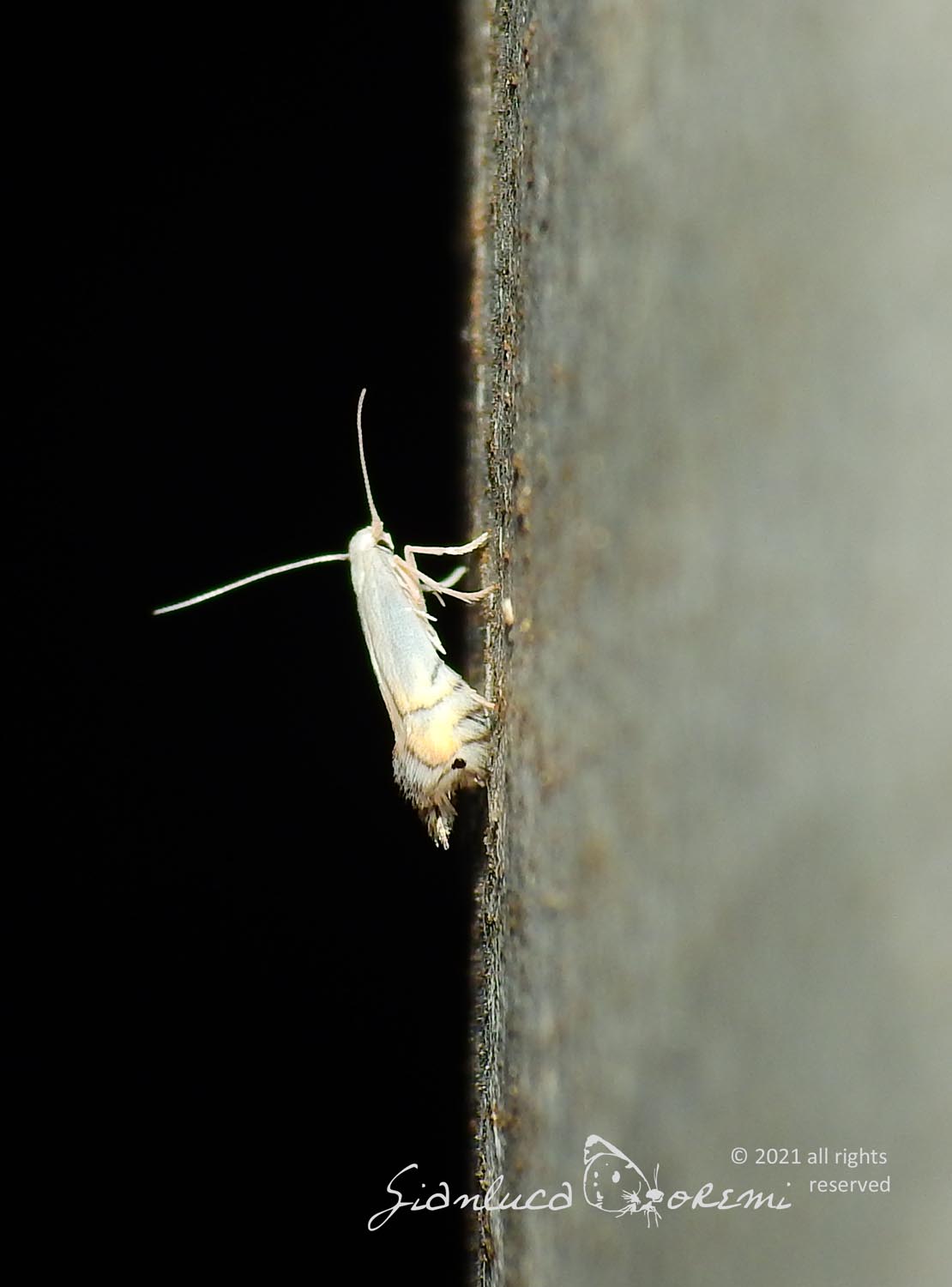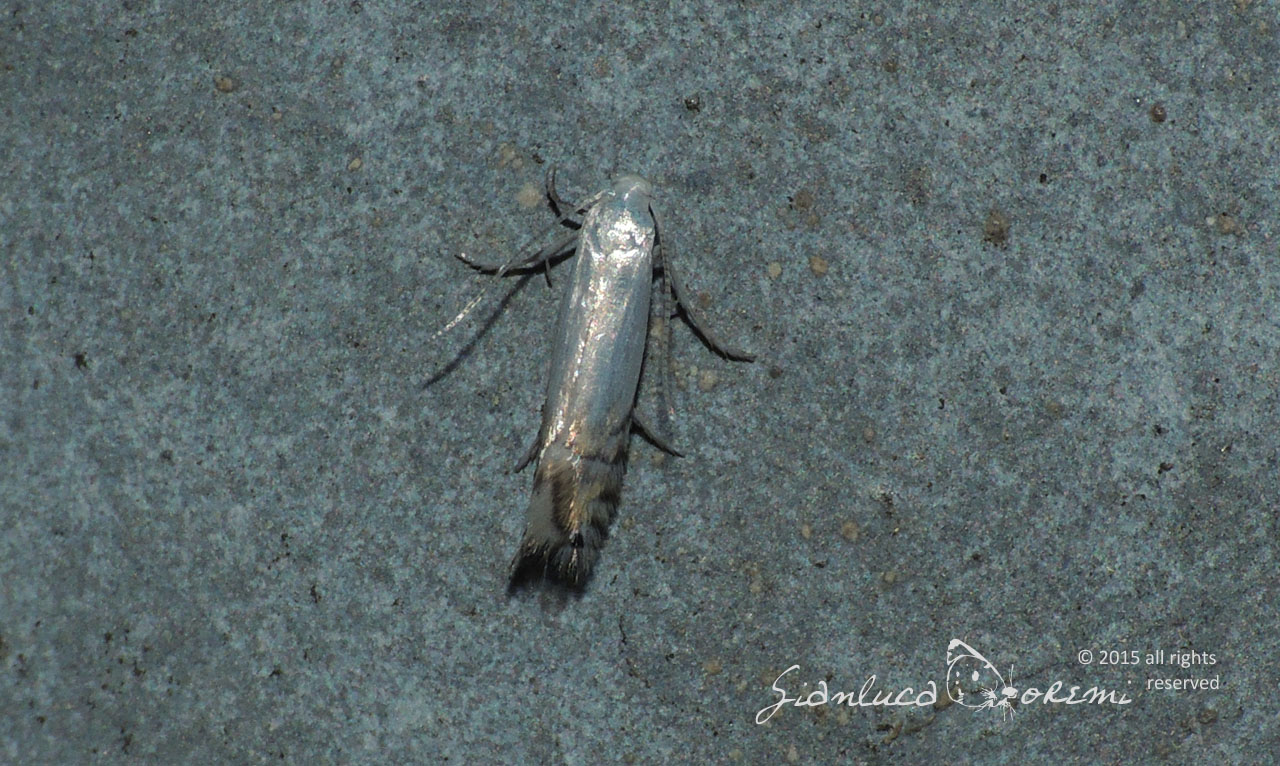Phyllocnistis xenia
M. Hering, 1936
-
 Subfamily: Phyllocnistinae
Subfamily: Phyllocnistinae -
 Wingspan: 06-07 mm
Wingspan: 06-07 mm -
 Flight period: Jul - Sep (Jan - Dec)
Flight period: Jul - Sep (Jan - Dec) -
 Spread: Common
Spread: Common -
 Host plants: Populus sp.
Host plants: Populus sp.
Information
Phyllocnistis xenia is a small moth from the Gracillariidae family, Phyllocnistinae subfamily, with a 06-07 mm wingspan.
In Europe it is present in Portugal, Spain, the United Kingdom, France, the Netherlands, Belgium, Germany, Switzerland, Austria, the Czech Republic, Slovakia and Romania. *
In Italy it is absent from the islands. *
The adults of Phyllocnistis xenia have a silvery white background color of the front wings, a little darker with yellowish shades in the apical zone;
five rib striae varying in color from ocher to brown, the second of which extends to the back, forming a narrow transverse band.
A black spot in the apical area from which two dark brown hooks start, ending in the long fringes, forming a horizontal "V". **, ****
The hind wings are strongly fringed greyish, almost feathered.
The taxonomy of this species is still debated as it cannot be separated with certainty from the adult of Phyllocnistis labyrinthella
the two moths are considered by many to be conspecific or synonymous.
For the differentiation of the two species, some authors agree on the use of the examination of the larvae mine, in fact there seems to be a constant difference in the
Phyllocnistis xenia excrement line which is wide, shaded and green and that of Phyllocnistis labyrinthella
which is narrow, defined and brownish black.
In addition, the Phyllocnistis labyrinthella mine often extends to the underside of the leaf,
which does not seem to happen in Phyllocnistis xenia .
Bivoltine the adults of this moth are visible in July again at the end of August and September, they overwinter at the adult stage.
The species hibernates at the pupal stage, within the cocoon woven within the fallen leaf between the leaves in the ground.
The adults are visible from July to August and again from September to, probably, May of the following year, in two generations, which suggests that it overwinter at the adult stage.
The eggs are laid on the upper side of the leaf. ****
The larva is greenish, the pupa is yellow. **, ***
There is no real cocoon, the caterpillar pupates under a fragile membrane on which the leaf margin is folded. Adults are active at sunset. ****
The larvae are oligophages and feed on Populus alba, but it has also been reported by Populus canescens. ****
* Lepidoptera mundi https://lepidoptera.eu/ - Fauna Europea https://fauna-eu.org/
** Bestimmungshilfe für die in Europa nachgewiesenen Schmetterlingsarten - http://lepiforum.de/
*** Plant Parasites of Europe leafminers, galls and fungi - https://bladmineerders.nl/
**** Catalogue of the Lepidoptera of Belgium - https://projects.biodiversity.be/lepidoptera/species/4552/






 EN
EN ITA
ITA
Social and publications